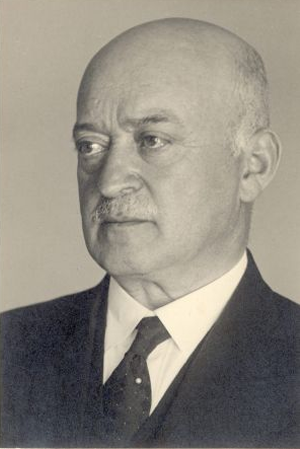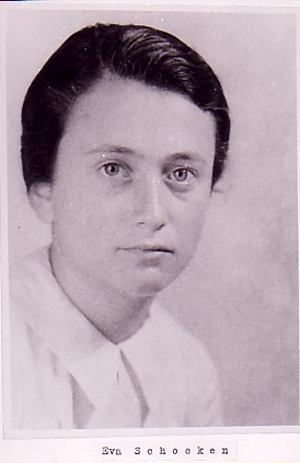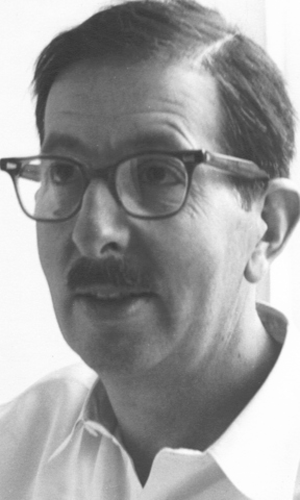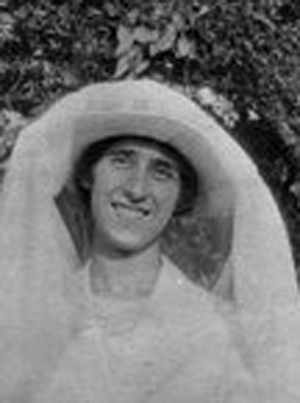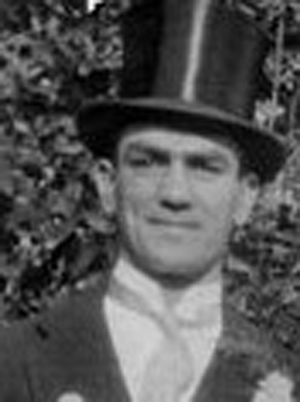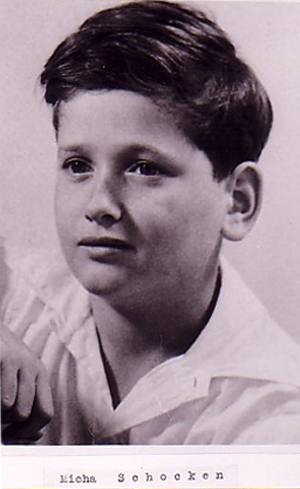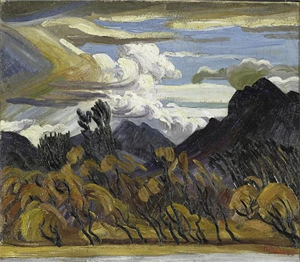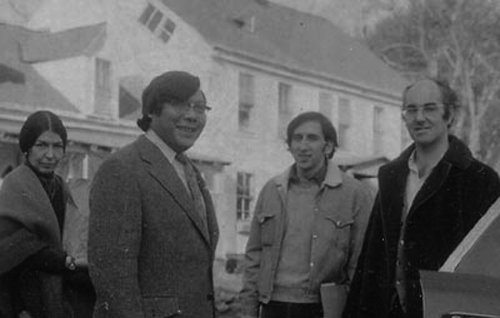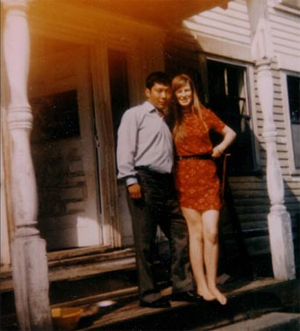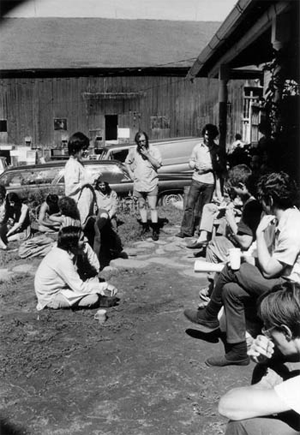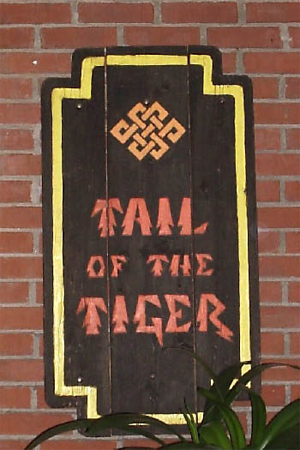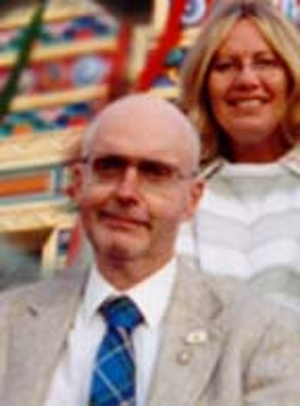Money and Soulby Hillel Halkin
The New Republic
January 11, 2004
NOTICE: THIS WORK MAY BE PROTECTED BY COPYRIGHTYOU ARE REQUIRED TO READ
THE COPYRIGHT NOTICE AT THIS LINK BEFORE YOU READ THE FOLLOWING WORK, THAT IS AVAILABLE SOLELY FOR PRIVATE STUDY, SCHOLARSHIP OR RESEARCH PURSUANT TO 17 U.S.C. SECTION 107 AND 108. IN THE EVENT THAT THE LIBRARY DETERMINES THAT UNLAWFUL COPYING OF THIS WORK HAS OCCURRED, THE LIBRARY HAS THE RIGHT TO BLOCK THE I.P. ADDRESS AT WHICH THE UNLAWFUL COPYING APPEARED TO HAVE OCCURRED. THANK YOU FOR RESPECTING THE RIGHTS OF COPYRIGHT OWNERS.
The Patron
A Life of Salman Schocken, 1877-1959
by Anthony David
(Metropolitan Books, 451 pp., $ 30)
For a year in the early 1960s, not long after finishing college, I had a job working for Schocken Books, a small publishing house in New York. Actually, "small" is something of an overstatement. Schocken consisted at the time of four people working in a two-room apartment on 38th Street and Park Avenue: the editor-in-chief Herzl Rome, two secretaries, and the editorial staff, which was me. Rome was a shy man who spent much of his time behind a desk in the apartment's former bedroom busy with his favorite occupation of drawing. He was married to Eve Schocken, whose father, the erstwhile German-Jewish department-store magnate Salman Schocken, had founded the Schocken Verlag in Berlin in 1930.
My job was not onerous. Besides copy-editing, writing blurbs, reading and rejecting unsolicited manuscripts (one or two, with content to match, addressed to "Shocking Books"), and running occasional errands, I frequented the nearby 42nd Street Library to look for out-of-print titles that could be salvaged from the public domain and re-issued in paperback. (Among the volumes I remember doing that year were Acton's Renaissance to Revolution and Schurer's A History of the Jewish People in the Time of Jesus.) This, along with the English rights to the works of Franz Kafka, was the mainstay of the house, which had run out of the initiative and the budget to publish much in the way of new books.
Salman Schocken, who had died a few years earlier, had not planned it that way. When he established Schocken Books in 1946 after having first moved his publishing business to Palestine, to which he fled from Nazi Germany in 1938, he had typically grandiose ambitions for it. He aspired, as he wrote in a letter cited by Anthony David, to make it "the greatest force within [American] Jewish life" by producing "a series of books that will give the young American Jew the opportunity to become acquainted with the treasures of thousands of years of our Jewish culture." He was convinced that "if we succeed, it will most likely be the greatest accomplishment among the many things that have been connected with the name Schocken over the past forty years."
These accomplishments were indeed impressive, starting with the department stores themselves. They were state-of-the-art establishments, the first of which opened in the Saxon town of Oelsnitz, in eastern Germany, in 1904. Department stores were not a novelty when the young Schocken, the son of a traditionally religious Jewish shop owner from the district of Posen near the German-Polish border, scraped up the capital to start one; they had existed in European cities since the mid-nineteenth century, and were pioneered in America by German Jews such as Bernard Gimbel and Lazarus Straus, the owner of Macy's. What distinguished Schocken's stores was his adoption of the American model of aggressive marketing, industrial-style efficiency, in-house design, and the democratizing copying and mass-producing of new ideas, and of fashionable and luxury items, to make them available to ordinary buyers at reasonable prices.
The Oelsnitz store's success led to more and more branches, and two of them, in Nuremberg and Stuttgart, were housed in buildings designed by Erich Mendelsohn, one of Germany's leading modernist architects. By the time of the Nazi takeover, the Schocken chain, David writes, was one of Europe's largest. In big cities and small towns alike, the stores sold Bauhaus-inspired furniture and cologne to the New Man; the New Woman could now bare her thighs in public after the company introduced form-fitting, short cotton dresses. The phonograph department carried the American hit "Yes, We Have No Bananas." The book department shied away from "pulp fiction"... These lightly amorous and melodramatic novelettes sold in millions at the time--but Salman was undeterred. His stores offered readers not only serious fiction but also ... progressive texts on the female body [and] female sexuality, as well as works on repressed feelings and compensated drives... Advertisements, informative brochures, and the clever use of sales displays educated mothers to catch up to the modern world.
Serious books--reading them, collecting them, and supporting their authors--were Salman Schocken's real passion. He was one of those businessmen who, had he been his own son, would have chosen a more intellectual vocation. A voracious reader as a boy to whom not commerce but "scholarship [seemed] an ideal mode of life," he was denied a higher education because his father could not pay the tuition. He liked to tell a story, whether or not embellished by memory, that could have been an outline of his life. Frustrated by his inability to continue his studies, David relates, "he vented his fury to a sympathetic rabbi he happened to meet on a train. 'I have already begun to read the writings of [German-Jewish philosopher] Moses Mendelssohn,' he explained. 'You should first become a merchant,' the rabbi replied. 'And once you are on your feet economically you can better devote yourself to more spiritual interests than you could as a hungry academic.'"
This tale was double-edged, for if the merchant without "spiritual interests" was someone whom the department store owner looked down on, he felt a more subtle and ambivalent condescension toward the "hungry academic," the impractical intellectual who could not survive without the merchant's help. He himself took pride in being equally a man of the world and a man of the mind, although it was only on a trip to Italy in 1907 that he glimpsed a way of productively combining the two things. There, while reading Burckhardt's History of The Italian Renaissance, he was struck by its account of "the merchant princes who put their stamp on the era by pouring money into culture... It was an eye-opening discovery for the thirty-year-old [Schocken ] to see how culture could go hand in hand with buying, selling, dealing, and trading. Thoughts of backing a Jewish renaissance germinated."
'Jewish renaissance," I imagine, was a phrase that Schocken picked up from reading Martin Buber, who had used it in several essays published in the first decade of the twentieth century. Like Schocken, Buber had grown up in a traditional Jewish environment and moved beyond it, and now, under the influence of Zionism, he was working his way back to his Jewish roots. He was a harbinger of what was to become a small movement of educated German Jews, many from partially or wholly assimilated homes, who sought to re-connect with Judaism on a more sophisticated level than that of the German-Jewish discourse of the day.
Up to the beginning of the century, masses of Jews, lured by the opening up to them of German society, had left the Jewish fold and not returned to it; as a sociological generalization it was safe to say, as Gershom Scholem did in his memoir From Berlin to Jerusalem, that "any young Jew who was not part of the strictly Orthodox minority" in those years "faced the progressive deterioration of his Jewish identity." Now a counter-trend, modest in size but qualitatively remarkable, set in. Besides Buber and Scholem, one can point to such figures as Kafka, Franz Rosenzweig, Walter Benjamin, Gustav Landauer, Erich Gutkind, Robert Eisler, Jiri Langer, Ernst Simon, Kurt Blumenfeld, Max Brod, and Elsa Lasker-Schueler, to name but a few. Children of the 1870s and '80s, they were in revolt against the generation of their parents, whose bourgeois existence had deprived them, they felt, of all that was vital in life, including the wellsprings of their Jewishness. A "Jewish renaissance" was vaguely in the air because it was concretely hungered for.
Schocken met Buber in 1911. That same year also saw the beginning of his involvement with the German Zionist movement, whose congress he addressed. He did not have to pound on doors for a hearing; men seeking to spend their money never do, even if he considered himself not a philanthropist but a cultural entrepreneur prepared to invest in the Jewish future. It took a while to weigh his options, but in 1915, during World War I, he made his first investment: the financing of Buber's Der Jude, a periodical that was to be, until its demise in 1924, the most interesting Jewish review in the world. By the war's end he was also sponsoring the research of Scholem, then launching a career as a scholar of Jewish mysticism, and the fiction of Shmuel Yosef Czaczkes, a young Galician-born Hebrew writer living in Germany.
He had also established an advisory committee named "The Cultural Board of Management," headed by Buber, to recommend more ambitious projects. Schocken conceived of this board as the engine of his "Jewish renaissance," a body of experts that would plan and commission large numbers of great Jewish works by the simple expedient of finding the right authors to write on the right subjects, just as a good retailer might find the right designer for a line of women's lingerie. He did not get very far. Although the postwar years in Weimar Germany did witness a flowering of Jewish talent, this had little to do with Schocken's efforts. The right authors for the dozens of books he wanted written either did not exist, or were at work on something else, or were interested in writing different books, or never delivered the ones that they promised. Except for the monumental Buber-Rosenzweig translation of the Bible into German, the board of management, much to his frustration, failed to come up with suggestions that he liked (he vetoed several that he didn't, such as Buber's idea of commissioning Arnold Zweig to write a Jewish "spiritual novel"), and it was eventually disbanded.
Schocken seemed to think that literatures and peoples could be managed like department-store chains. Stymied on the cultural front, he turned to the Zionist one, proposing at the Zionist Congress in Vienna in 1925 to convert the Jewish community of Palestine into a giant corporation that would be profitably run from his German headquarters. Although Anthony David defends the "Schocken Plan" as "not entirely far-fetched," since "the total size of the Jewish economy [of Palestine] was considerably smaller than a major industrial conglomerate," this is one of several cases in which one suspects he has over-identified as a biographer with his subject's megalomaniacal tendencies.
Nor did Schocken's "authoritarian style," as David calls it, leave much of a mark during several years as chairman of the executive council of the Hebrew University of Jerusalem, a stint that ended when he immigrated to America in 1941. Opinionated and sure of himself like many a self-made man, he was happiest when he was undisputedly in charge, as he was of Schocken Verlag, a truly first-rate publishing house; of the Tel Aviv newspaper Ha'aretz, bought in 1936 and turned into the intellectually serious and independently liberal daily that it still is today; and of the Schocken Library, whose superb collection of Judaica and rare books, while remaining housed in his Jerusalem residence, was donated to the Jewish Theological Seminary after his death.
And that, after his death, is what, if at all, Salman Schocken would have been remembered as--a noted businessman, publisher, bibliophile, and German Zionist leader with some inflated notions of himself--were it not for his lifelong association with Shmuel Yosef Czaczkes, who went on to win the Nobel Prize for Literature under the pen-name of S.Y. Agnon. Agnon had immigrated to Palestine from a Galician shtetl in 1908 and traveled to Germany in 1912 to broaden his horizons, and was stranded there by Word War I. Struggling to survive as a part-time Hebrew tutor and editor, he passed the first half of the war years in Berlin in difficult circumstances, moving from flat to flat and hoping to avoid the draft, for which he was eligible as an Austrian citizen. In the end he received his call-up, flunked his physical by swallowing volumes of black coffee that made him ill, and landed in the hospital with a kidney ailment.
By then, however, he had met Salman Schocken and been taken under his wing. Indeed, he was already under Schocken's wing before meeting him and without knowing it, since Schocken, having heard of the gifted young writer from Palestine, had arranged behind Agnon's back for his pay to continue being remitted when the Hebrew publisher he was working for shut down. (It is a pity that David omits this detail, which says something about Schocken's occasional capacity for delicacy.) The two men were finally introduced in 1916, and soon afterward Schocken offered Agnon a commission for an anthology of Jewish literature that came with a monthly stipend for five years--an anthology that Agnon never prepared and perhaps was never meant to prepare as long as he concentrated on his own writing. It was the end of his financial worries. From then on Schocken saw to his livelihood, first as his patron and later as his Hebrew publisher.
Their relationship, though cordial, was always formal. In the correspondence between them, partly in Hebrew and partly in German, Schocken wrote to "Dear Agnon" or "Dear Mr. Agnon," and Agnon wrote back to "My Dear and Most Esteemed Mr. Schocken," "Dear Sir and Dear Friend," and other combinations. Eventually these letters, those of two men prominent in their fields, came to be largely about publishing matters. But before Agnon became well known they were more the exchange of a stepfatherly benefactor with his adopted beneficiary. Agnon described his work and his needs, flattering his patron with compliments and the Jewish stories that he chose to share with him; Schocken sent back money, books, and advice. In a letter from Munich, to which he had gone in 1919 to work on a Schocken-commissioned Hebrew children's book illustrated by a niece of Freud's, Agnon asked for a department-store shipment of "6 size 39 shirt collars, 6 pairs of socks, and 3 pairs of underwear," adding, "Please send it all by express mail-- and don't deduct it from my pay." Several weeks later Schocken replied that he hoped the clothing had arrived; he counseled Agnon to quit the city, a turbulent place following the crushing of Bavaria's short-lived Communist regime, and concluded, with a quiet generosity that any young writer today would give his right arm to have from his publisher, "If you need to have your monthly payments increased, please let me know."
Schocken had grown up geographically close to Eastern Europe and was attracted, as were other German Jewish intellectuals of his day, to what he considered the greater richness and authenticity of Eastern European Jewish life--and those were the qualities that he admired, and was charmed by, in Agnon. And yet much to his credit, he also had the literary acumen to realize, on the basis of Agnon's early stories alone, that he was dealing with a writer of genius who needed neither prodding nor criticism, nor even encouragement, but simply the leisure to write without having to fret about money. It is impossible to face a bookshelf of Agnon's large output without reflecting on how much of it might be missing were it not for Schocken's support.
This support was irreplaceable. Foundation grants did not exist in Agnon's day, certainly not in Hebrew literature; the Hebrew-reading public was too small to enable an author to live from the sale of his work; and there was only one other serious patron of Hebrew writing, the Russian-Jewish publisher Avraham Yosef Shtiebl, who put out some of Agnon's early work but lost most of his money after World War I. Agnon would have become what he became without Schocken's support, of course; but the awful torment of having to drudge at some classroom or office job when all he wanted was to write his fiction was spared him. There is a saying in the Talmud that some men win and some men lose an entire world in a moment. Salman Schocken won his in the moment he rescued Agnon.
Anthony David has written an engaging and well-paced biography. Its main fault is his often uncritical acceptance of Schocken's own appraisal of himself and his surroundings. Sometimes a biographer can feel too close to his subject. This is especially true when David writes about Schocken's relationship to Hebrew literature and Jewish culture. Schocken was an autodidact, and he had the autodidact's enthusiasm for his own discoveries; what he did not know did not exist for him, and what was revealed to him he thought unknown before him. At a time when the entire cultural enterprise of Zionism was engaged in constructing a "usable past" for a secular Jewish nationalism, there was a preposterous naivete in Schocken's belief that he would be the man to make this past available--that "he [would] set out," as David writes with a straight face, "to show how Jews had lived through all the great epochs of human history; [how] they too had left records, even if no one had bothered to excavate them." A whole industry of such excavation was already underway at the time Schocken began to dream of it, and if David's lack of Hebrew (or so I take it to be from the absence of references to Hebrew sources in his notes) helps to explain his ignorance of the achievements of nineteenth- and early twentieth-century Jewish scholarship, it still does not quite excuse it.
David could also use more perspective on Schocken's attitude toward Zionist and Israeli politics, whose dominant figures in his day were Eastern European Jews. Although Schocken did not share the prejudice against Ostjuden that was widespread among German Jews, his brand of Zionism, with its cultural and spiritual idealism that had little patience for the details of nation- and state-building, was of a distinctly German variety. The Zionists to whom he was closest during his years in Palestine, a country that he never felt much at home in, were German Jews with similar views, men such as Buber, Scholem, the philosopher Hugo Bergmann, and the journalist Robert Weltsch. Many of these men, traumatized by their experience of Nazism, were active in the Jewish pacifist organization B'rit Shalom--and Schocken, while never joining it, participated in their condemnation of Zionist leaders like Ben-Gurion and Jabotinsky as nationalist vulgarians interested only in Jewish power. David, writing with contemporary events in mind, approvingly seems to consider this group a forerunner of today's Israeli "peace camp." Perhaps it was; but David might also have asked whether, in the age of the Holocaust and the unrelenting Arab determination to first prevent and then wipe out a Jewish state, the contempt for power was not a greater sin than the pursuit of it.
Schocken continued to surround himself with German Jews during his years in New York.
To edit Schocken Books he hired the scholar Nahum Glatzer, later a professor at Brandeis, and Hannah Arendt. Arendt did not last long in the job. She quarreled with Schocken over publishing authors such as T.S. Eliot and Walter Benjamin, affordable properties for a small house in those years but too abstruse for Schocken to appreciate; she called him "dictatorial" and "unbearably inept," and quit in 1948.Schocken himself lost interest in his publishing house at about the same time, as he had years before in his Board of Cultural Management. He turned it over to his son Theodor, who appointed his brother-in-law Herzl Rome to run it. It was a sleepy place the year I worked there. Kafka was not yet a household name in America and the office phone didn't ring often. I wrote my blurbs and rejection slips in the mornings, had a sandwich and a beer at my desk, and went off to the 42nd Street Library.
One day we had a visit from a tall, mournfully middle-aged man. His name was Robert Klopstock, and he said he was in New York for the day and had stopped by to say hello. I knew who he was: I had recently read Max Brod's biography of Kafka--I had a complete set of Kafka in my apartment, purloined from the office--and Klopstock was described there with warmth as a young medical student who, with Kafka's last love Dora Diamant, ministered to him as he lay dying, a poor man living on a tiny pension, in a sanatorium near Vienna in 1924. Greatly excited, I asked to hear more. "Franz died in my arms," Klopstock confirmed with a helpless gesture, as if it were a death that he should have prevented. But even now, nearly forty years later, he seemed too broken up by it to go on. One of the secretaries made him tea, and he drank it and went his way.
To the best of my knowledge Salman Schocken never met Kafka, the rights to whose work he bought for a modest sum from Kafka's mother long after her son's death. Kafka himself earned nothing to speak of from the little he published in his lifetime, and worked in an accident insurance office in Prague, napping in the afternoon when he came home and staying up nights to write. It was a killing routine. "Dearest," he wrote in a midnight letter to his fiancee Felice Bauer in December 1912 after reluctantly putting away a story he was working on, "I really should have gone on writing all night. Nevertheless, I am stopping, I dare not risk it." He had to go to bed because he had been falling asleep at work and had become "a nightmare" to his boss. "Sometimes," he wrote, "I think I can almost hear myself being ground down, by my writing on the one hand, by the office on the other." And there at the time was Schocken, who already knew Buber who knew Kafka, eager to be a patron! Imagine if... But even in the Talmud you only get to win one world. We should be grateful enough for that one.
